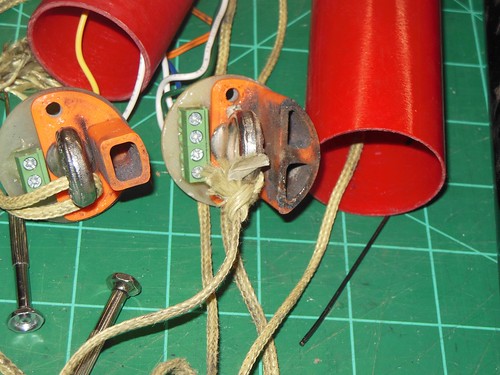KilroySmith
Well-Known Member
- Joined
- Oct 28, 2015
- Messages
- 183
- Reaction score
- 112
So, has anyone printed charge wells before?
I'm thinking of printing a cap on top of my AvBay bulkhead with a charge well incorporated. The AvBay bulkhead (a nicely machined piece of Aluminum from Madcow) will provide strength and protection to the Avionics, the printed cap will simply provide a lightweight, mechanically fixed place for the ejection charge.
I was originally planning on just putting a nipple on the cap that an Aluminum tube would fit over, then gluing the tube in place. The tube would contain the charge, and the nipple would rigidly hold it in place. But then my mind asked "Self, could I eliminate that aluminum tube and just print the whole thing?". My printer is currently loaded with PETG, but even that wouldn't hold up to sustained temperatures of the sort that a charge could generate; but I figure it might just work fine for the few milliseconds that it'll be exposed to the temperature.
Thoughts?
I'm thinking of printing a cap on top of my AvBay bulkhead with a charge well incorporated. The AvBay bulkhead (a nicely machined piece of Aluminum from Madcow) will provide strength and protection to the Avionics, the printed cap will simply provide a lightweight, mechanically fixed place for the ejection charge.
I was originally planning on just putting a nipple on the cap that an Aluminum tube would fit over, then gluing the tube in place. The tube would contain the charge, and the nipple would rigidly hold it in place. But then my mind asked "Self, could I eliminate that aluminum tube and just print the whole thing?". My printer is currently loaded with PETG, but even that wouldn't hold up to sustained temperatures of the sort that a charge could generate; but I figure it might just work fine for the few milliseconds that it'll be exposed to the temperature.
Thoughts?





